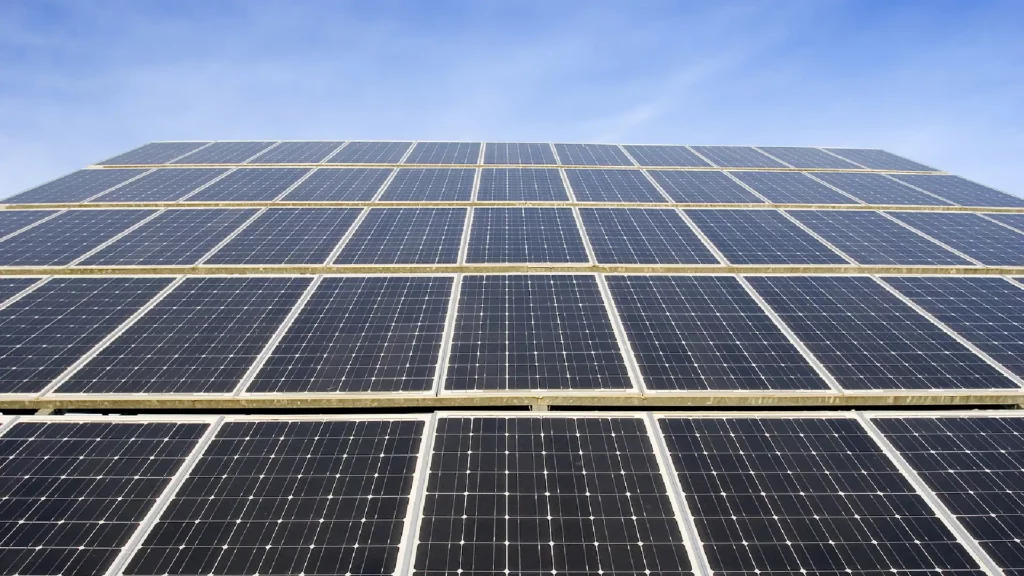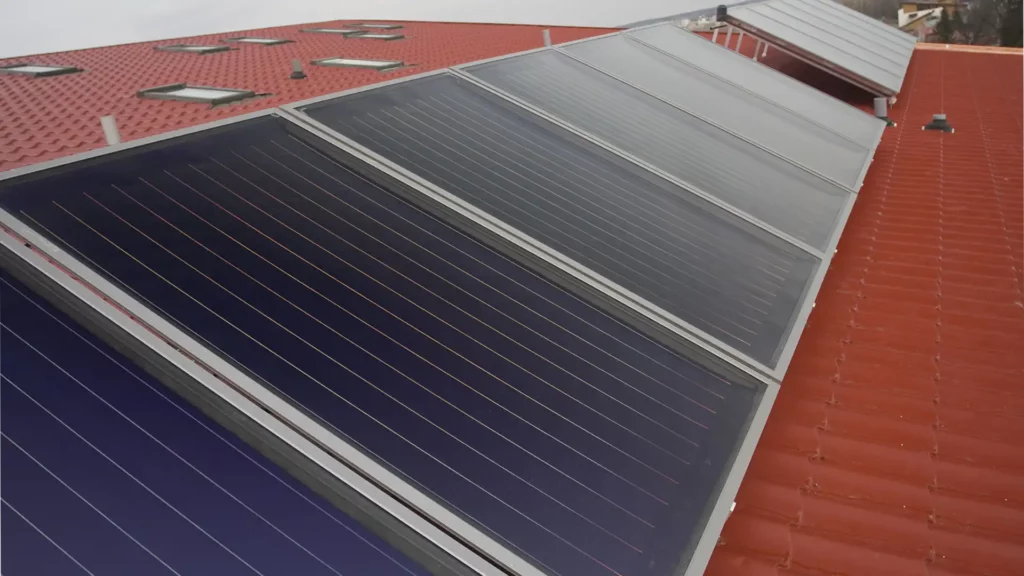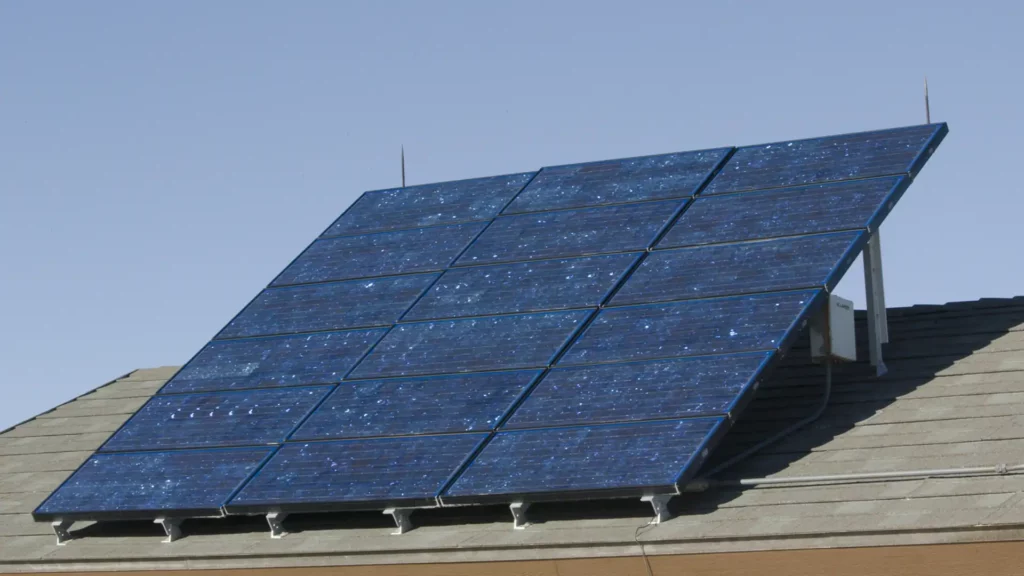Solar energy is undoubtedly one of the most promising sources of renewable energy in today's world. As we strive to reduce our carbon footprint and transition towards a sustainable future, the utilization of solar panels has become increasingly popular.
In this comprehensive guide, we will delve deep into the world of MSolar panels, exploring their benefits, types, installation process, maintenance, and much more. Whether you are an environmentally conscious homeowner, a business owner looking to save on energy costs, or simply curious about Solar Energy Efficiency, this guide is designed to provide you with all the information you need.
What are MSolar Panels?
Monocrystalline Solar Panels, commonly referred to as MSolar Panels, stand as a pinnacle in solar energy technology, boasting remarkable efficiency and longevity. These advanced solar panels are designed to capture sunlight and transform it into electricity, offering numerous advantages for both residential and commercial installations.
Key Characteristics of MSolar Panels
- High Efficiency: MSolar Panels are renowned for their exceptional efficiency. Crafted from high-purity silicon, they can convert a substantial percentage of sunlight into electricity. With efficiency rates ranging from 15% to 22%, they outperform many other solar panel types in terms of power generation.
- Durability: These panels are built to last, with a typical lifespan of 25 to 30 years. Many manufacturers provide warranties to ensure consistent performance over time. Their robust construction allows them to withstand harsh weather conditions, making them a reliable investment.
- Space Efficiency: MSolar Panels excel in space utilization. They demand less roof space compared to alternative technologies, making them ideal for installations with limited area availability. This space efficiency enables more flexible and versatile solar setups.
- Aesthetic Appeal: MSolar Panels often sport a sleek, black design that enhances the visual appeal of residential and commercial structures. They seamlessly integrate with rooftops, maintaining the aesthetic integrity of buildings.
Advantages of MSolar Panels
- High Energy Production: With their high efficiency, MSolar Panels can generate more electricity per square foot or square meter, maximizing energy output from limited space.
- Longevity: When properly maintained, MSolar Panels can deliver clean energy for decades. Their durability ensures a consistent and sustainable energy source, reducing the need for frequent replacements.
- Space Optimization: MSolar Panels are ideal for properties with limited rooftop area. Their compact size allows homeowners and businesses to make the most of available space for solar installations.
- Aesthetic Integration: The uniform black appearance of MSolar Panels harmonizes with various architectural styles, contributing to the overall visual appeal of homes and commercial buildings.
- Performance in Low Light Conditions: MSolar Panels excel in low-light situations, ensuring a continuous flow of electricity, even on cloudy days or during early mornings and late afternoons. This reliability makes them a practical choice for regions with variable weather conditions.

Types of MSolar Panels
When it comes to harnessing the power of the sun, Monocrystalline Solar Panels are just one piece of the puzzle. Understanding the various types of MSolar Panels can help you make an informed decision when choosing the right solar technology for your needs.
Monocrystalline Solar Panels
Monocrystalline solar panels are celebrated for their remarkable efficiency and sophisticated appearance. These panels are constructed from a single crystal structure, enabling electrons to move with greater freedom, resulting in superior electricity generation. Their high efficiency makes them a preferred choice for residential and commercial installations where space is limited, and aesthetics matter.
Polycrystalline Solar Panels
Polycrystalline solar panels offer a more budget-friendly alternative to monocrystalline panels but come with a slight trade-off in efficiency. These panels are manufactured using multiple silicon fragments, which can marginally reduce their overall performance. While they may not reach the same efficiency levels as monocrystalline panels, polycrystalline panels remain a practical choice for those prioritizing cost-effectiveness.
Thin-Film Solar Panels
Thin-film solar panels represent a lightweight and flexible option that can be adapted to various applications. They are composed of thin layers of semiconductor materials, offering versatility in installation. However, their efficiency levels are generally lower than crystalline panels, and they have a shorter lifespan. Thin-film panels find their niche in situations where flexibility and adaptability outweigh the need for maximum efficiency.
Bifacial Solar Panels
Bifacial solar panels are designed to capture sunlight from both sides, enhancing their energy yield. This technology has gained popularity in commercial and industrial installations where optimizing energy production is crucial. By utilizing reflected sunlight from surfaces below and around them, bifacial panels demonstrate a significant advantage in terms of energy output.
How Do MSolar Panels Work?
MSolar Panels, powered by the photovoltaic effect, are at the forefront of renewable energy technology. To fully grasp their functionality, let's delve deeper into how these panels convert sunlight into usable electricity.
The Photovoltaic Effect
At the core of MSolar panels lies the photovoltaic effect, a fundamental process wherein specific materials generate an electric current when exposed to sunlight. This effect serves as the cornerstone of solar panel operation and is pivotal in elucidating their energy conversion mechanism.
Conversion of Sunlight to Electricity
When sunlight strikes the surface of an MSolar panel, it sets in motion a remarkable chain of events. Silicon cells within the panel absorb the incoming photons, energizing the electrons within the material. This energy infusion prompts these excited electrons to break free from their atomic bonds, creating an electron flow—essentially, an electric current. This flow of electrons is generated in the form of direct current (DC), an essential stage in the solar power generation process.
From DC to AC Power
While the electricity generated within MSolar panels is in DC form, most homes and businesses operate on alternating current (AC). To make this energy usable, an inverter is employed. The inverter's role is to convert the DC electricity into AC electricity, which can power appliances, lighting, and other electrical systems within the premises.
Net Metering and Grid Connection
MSolar panel systems are often integrated with the electrical grid through a mechanism called net metering. This arrangement allows for a symbiotic relationship between your solar installation and the grid.
Here's how it works: when your MSolar panels produce more electricity than your immediate consumption needs (commonly during sunny days), the surplus energy is fed back into the grid. In return, you receive credits for the excess electricity supplied.
These credits come in handy during periods when your panels aren't producing electricity, such as at night or on cloudy days. During these times, you can seamlessly draw electricity from the grid, ensuring a continuous and reliable power supply.

The Installation Process
The installation of MSolar Panels is a meticulously planned and executed process, ensuring optimal energy production, safety, and integration with your existing electrical system. Here, we delve into the intricacies of each step involved in bringing solar power to your home or business.
Site Assessment and Solar Panel Orientation
The installation journey begins with a thorough site assessment. This crucial step involves evaluating various factors to determine the most suitable location for your MSolar panels. Considerations include:
- Roof Orientation: Panels are typically installed facing south in the Northern Hemisphere and north in the Southern Hemisphere to maximize exposure to sunlight throughout the day.
- Shading Analysis: Identifying potential sources of shade, such as trees or nearby structures, is vital to ensure your panels receive uninterrupted sunlight.
- Local Climate: Understanding local weather patterns and seasonal variations helps optimize your solar system's performance.
Mounting the Panels
Solar panels can be mounted using several methods, including on rooftops, ground-mounted structures, or as integrated elements of buildings. Regardless of the installation type, the mounting structure must be securely anchored to support the weight of the panels and withstand diverse weather conditions, including wind and snow loads.
Electrical Wiring and Inverter Installation
Efficient electrical wiring is paramount in the solar installation process. This step involves connecting the solar panels to an inverter, a critical component responsible for converting the direct current (DC) electricity generated by the panels into alternating current (AC) electricity suitable for use in your home or business.
Connection to the Grid
A certified electrician plays a pivotal role in connecting your solar system to the grid. This grid connection allows for a seamless exchange of electricity between your solar installation and the local utility grid. When your MSolar panels produce surplus electricity (commonly during sunny periods), the excess energy is fed back into the grid, earning you credits. Conversely, during times when your panels aren't generating electricity (e.g., at night), you can draw electricity from the grid to meet your power needs, ensuring uninterrupted service.
Safety Considerations
Safety remains a paramount concern throughout the installation process. Solar installers are well-versed in local regulations and adhere to strict safety protocols. These precautions are implemented to safeguard both your property and the personnel involved in the installation, ensuring a secure and reliable solar system.
Benefits of Using MSolar Panels
Embracing MSolar Panels extends beyond environmental considerations, as their benefits encompass a spectrum of economic and energy-related advantages. Here, we explore the multifaceted advantages of harnessing this renewable energy source.
Environmental Benefits
- Reduced Carbon Footprint: The foremost environmental advantage of MSolar Panels lies in their capacity to generate clean and renewable energy. By harnessing sunlight, they substantially reduce the emission of greenhouse gases, contributing to a greener and more sustainable planet.
- Sustainable Energy Source: Solar energy is inherently sustainable, as it relies on an infinite resource: the sun. Unlike finite fossil fuels, solar power is inexhaustible, ensuring a perpetual source of clean energy without depleting natural resources.
- Lower Air and Water Pollution: Solar power production operates without the release of harmful pollutants or emissions. This, in turn, fosters improved air and water quality, promoting the well-being of ecosystems and human health.
Financial Benefits
- Energy Savings: MSolar Panels have the potential to substantially reduce or even eliminate your monthly electricity bills. Over time, these energy savings accumulate into significant cost reductions, making them a wise long-term investment.
- Return on Investment (ROI): Despite the initial upfront cost, MSolar Panels often yield a rapid ROI. Within a few years, the savings on your energy bills can offset the installation expenses. Furthermore, through net metering or solar incentives, your solar system may even generate income.
- Increased Property Value: Solar installations can enhance the market value of your property. The prospect of reduced energy bills and potential income from surplus energy can make your property more appealing to prospective buyers, offering an added financial benefit.
Energy Independence
Harnessing solar energy grants you a measure of energy independence. By generating your electricity, you become less reliant on external energy sources, affording you greater control over your energy supply. This self-sufficiency can be particularly valuable in times of energy price fluctuations or shortages.
Government Incentives
Governments worldwide recognize the environmental and economic benefits of solar power and often provide incentives to encourage its adoption. These incentives may include tax credits, rebates, and subsidies, which can significantly reduce the initial cost of installing MSolar Panels, making them a more affordable choice for homeowners and businesses.
MSolar Panels Maintenance
Preserving the efficiency and longevity of your MSolar Panel system requires diligent care and attention. Here, we delve into the multifaceted aspects of maintaining these solar installations to ensure they continue to deliver optimal performance.
Regular Cleaning
Maintaining clean MSolar Panels is fundamental to their functionality. Dust, dirt, leaves, and even bird droppings can accumulate on the panel surface, reducing their efficiency in absorbing sunlight. Regular cleaning, typically performed every few months, ensures that the panels can capture the maximum amount of sunlight.
Inspection and Monitoring
Frequent inspections play a pivotal role in identifying potential issues early, enabling timely repairs. Monitoring systems, integrated with your MSolar Panel setup, track energy production and system performance in real-time. This monitoring can help detect anomalies and irregularities, ensuring swift intervention when necessary to maintain peak efficiency.
Dealing with Snow and Shade
Adverse weather conditions, such as snowfall or shading from nearby structures or trees, can temporarily impede solar panel performance. To counter this, efficient snow removal techniques and measures to address shading issues are essential. Clearing snow promptly and trimming shading objects can help restore system productivity during such conditions.
Replacing Components
As your MSolar Panel system ages, certain components may require replacement. Inverters and batteries are examples of components that may wear out over time. Timely replacement of these parts is crucial to ensure the system's continued functionality and extend its overall lifespan. Routine maintenance not only safeguards the integrity of your investment but also contributes to sustained energy production.
Professional Servicing
Periodic professional servicing by certified technicians is advisable to address complex issues and ensure all components are functioning optimally. These professionals possess the expertise to diagnose and rectify any problems, further enhancing the longevity and performance of your MSolar Panel system.
Frequently Asked Questions (FAQs)
Are MSolar panels suitable for all types of buildings?
Yes, MSolar panels are versatile and can be installed on a wide range of buildings, including residential homes, commercial properties, industrial facilities, and even agricultural structures. However, the feasibility of installation may depend on factors like roof condition, available space, and local regulations. It's essential to consult with a professional solar installer to assess the suitability of your specific location.
What factors affect the efficiency of MSolar panels?
Several factors can impact the efficiency of MSolar panels. These include:
- Sunlight Exposure: MSolar panels perform best when exposed to direct sunlight. Shading from trees, nearby structures, or obstructions can reduce efficiency.
- Panel Angle and Orientation: Proper panel angle and orientation toward the sun maximize energy production.
- Temperature: Extreme temperatures, especially high heat, can slightly reduce panel efficiency.
- Panel Quality: The quality of the MSolar panels themselves can affect efficiency, with higher-quality panels typically having higher efficiency ratings.
Can I install MSolar panels if I live in an area with frequent inclement weather?
Yes, MSolar panels can be installed in regions with variable weather conditions. While their efficiency may decrease on cloudy or rainy days, they can still generate electricity. In fact, some regions with intermittent sunlight have successfully adopted solar power, demonstrating its adaptability.
What is the environmental impact of manufacturing MSolar panels?
The manufacturing of MSolar panels does require energy and resources, but it's essential to consider the long-term environmental benefits. Once installed, MSolar panels generate clean, renewable energy, reducing greenhouse gas emissions and reliance on fossil fuels. Many studies have shown that the environmental benefits of solar panel use far outweigh the environmental impact of their production.
How do I know if my solar panel system is performing optimally?
Monitoring systems can help you track the performance of your solar panel system. Most modern installations come with monitoring software that allows you to check real-time energy production, detect any issues, and assess the overall health of your system. Regular inspections by professionals can also ensure that your system is functioning optimally and identify any maintenance needs.
Are there any safety concerns associated with MSolar panels?
Safety is a top priority when it comes to MSolar panel installations. Professionals follow strict safety protocols during installation, including securing panels and electrical components properly. As a homeowner or business owner, you should exercise caution when cleaning or performing maintenance on your panels and follow safety guidelines to avoid accidents. Additionally, ensure that your solar system complies with local electrical codes and regulations.
Can I use MSolar panels to power my entire home or business?
The size of your solar panel system will determine how much of your energy needs it can cover. In many cases, it is possible to design a solar installation that can meet the majority, if not all, of your energy requirements. However, achieving complete energy independence may require a larger system and potentially energy storage solutions, such as batteries, to store excess energy for nighttime use or during power outages.
How do I find reputable solar installers?
Finding a reputable solar installer is crucial to the success of your solar panel project. You can start by researching local companies, checking customer reviews, and asking for referrals from friends or family members who have gone solar. Additionally, look for certifications and licenses, such as those from the North American Board of Certified Energy Practitioners (NABCEP), which indicate a high level of expertise and professionalism in the industry.
Conclusion
MSolar panels are a remarkable technology that offers numerous benefits to homeowners, businesses, and the environment. They are a key player in the transition to clean and sustainable energy sources, providing a reliable source of electricity while reducing carbon emissions and saving money in the long run.
As solar technology continues to advance, we can expect even greater efficiency and affordability in the future. Whether you are considering MSolar panels for your home or business, the benefits they offer make them a compelling choice for a greener and more sustainable future.
https://www.energy.gov/eere/solar/solar-research-and-development-funding-programs

